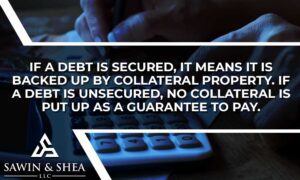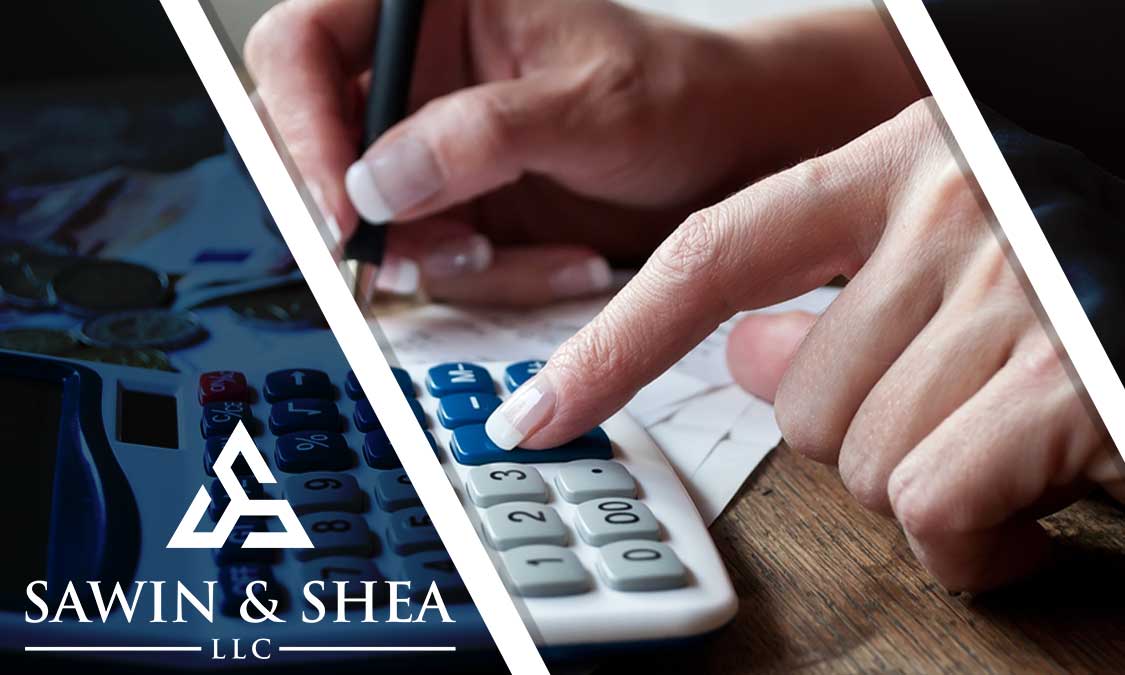If you’re struggling with financial hardship, filing for bankruptcy can be an effective way to get back on your feet. But filing for bankruptcy in Indiana doesn’t mean every outstanding debt you’ve ever incurred gets wiped away. Declaring bankruptcy will discharge most types of debt but not others. Before you declare bankruptcy, it’s crucial to understand how the law treats the concept of secured vs unsecured debt.
First, let’s briefly touch on two of the most common types of bankruptcy: Chapter 7 and Chapter 13.
What’s the Difference Between Chapter 7 and Chapter 13?
Put simply, Chapter 7 is a liquidation while Chapter 13 is about reorganization. What do we mean by this?
In the case of a Chapter 7 bankruptcy, the court appoints a trustee who is in charge of selling off (liquidating) a debtor’s non-exempt assets. Laws called exemption statutes determine what a person or married couple can keep through the Chapter 7 process. If a debtor has assets that are not protected under those statutes, the trustee can liquidate those items and use the proceeds to pay creditors back something.
Chapter 13 involves commitment from the declarer to repay a portion of their debt over a specified period (usually three to five years). If the declarer keeps to the agreement, then at the end of the period, they can keep their otherwise nonexempt assets and all allowable remaining debts are discharged.
Why Does the Type of Debt You Have Matter in Bankruptcy Cases?
It matters because not all debts are equal in the eyes of the law. It distinguishes between what are called ‘secured’ and ‘unsecured’ debts, which are terms you need to know before filing for bankruptcy.
And possibly the most common question people ask is credit card debt is secured or unsecured.
What is the difference?
Secured vs Unsecured Debt: What’s the Difference?

In broad terms, if a debt is secured, it means it is backed up by collateral property. If a debt is unsecured, no collateral is put up as a guarantee to pay.
Unsecured Debt
What is unsecured debt? Unsecured debt would include things like:
- Medical bills
- Credit card bills
- Utility bills
- Back rent
- Personal loans
At the end of the bankruptcy process, the remaining balances for these types of unsecured debts will likely be forgiven.
However, it is important to note that before bankruptcy is declared, lenders can still come after you to get you to pay off the unsecured debt. They may use collection agencies, or they may sue you (asking the court to garnish wages, take an asset, or put a lien on your home). One of the benefits of declaring bankruptcy is that debt collectors cannot try to collect on debts that were discharged in bankruptcy.
Secured Debt
Secured debt would include things like:
- House mortgages
- Car/vehicle loans
- Some taxes
- Loans for furniture/appliances/large electronics
Which type of debt is most often secured? The two most common examples of secured debt are mortgages and auto loans.
Secured Debt in Bankruptcy
A bankruptcy can discharge your underlying responsibility to pay the debt, but it does not do away with the creditors rights to the collateral they hold as security. That means that you must continue to pay on most secured debts to keep or hold onto the collateral.
This is accomplished by entering into a reaffirmation agreement in a Chapter 7. This is a voluntary agreement between a secured creditor and the debtor that re-obligates the debtor on the secured debt. The debtor must maintain regular payments on the secured loan in order to keep the collateral.
In a Chapter 13, the debtor’s reorganization plan sets forth how they are going to treat secured debt. A Chapter 13 plan can cure arrearages on houses or cars, stopping foreclosures and repossessions. Debtor’s plan can reorganize secured debt and pay it as part of the plan, many times at a lower interest rate and sometimes at the fair market value of the collateral even if they owe more on the loan.
In both types of cases, a debtor can opt to give the collateral back to the lender and walk away from the debt, receiving a discharge on remaining balances. This is what is called a “surrender” under bankruptcy law.
Consulting with the Bankruptcy Experts at Sawin & Shea, LLC
Bankruptcy law and the process for filing are complex, and determining whether your debts are secured vs. unsecured and the options for treating them in a bankruptcy is something our attorneys can assist you with.
An attorney with experience in bankruptcy law can help you with filings and discuss with you the credit consequences of filing for bankruptcy. The Indiana bankruptcy attorneys at Sawin & Shea, LLC have been helping people navigate the bankruptcy process for years. If you’re considering filing for bankruptcy, call us at 317-759-1483 or request your free consultation online.



